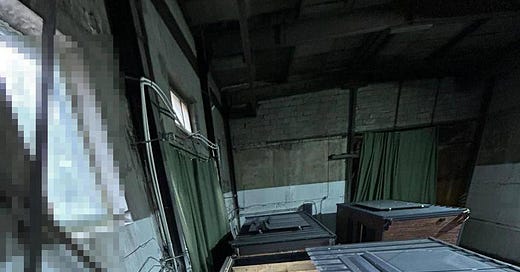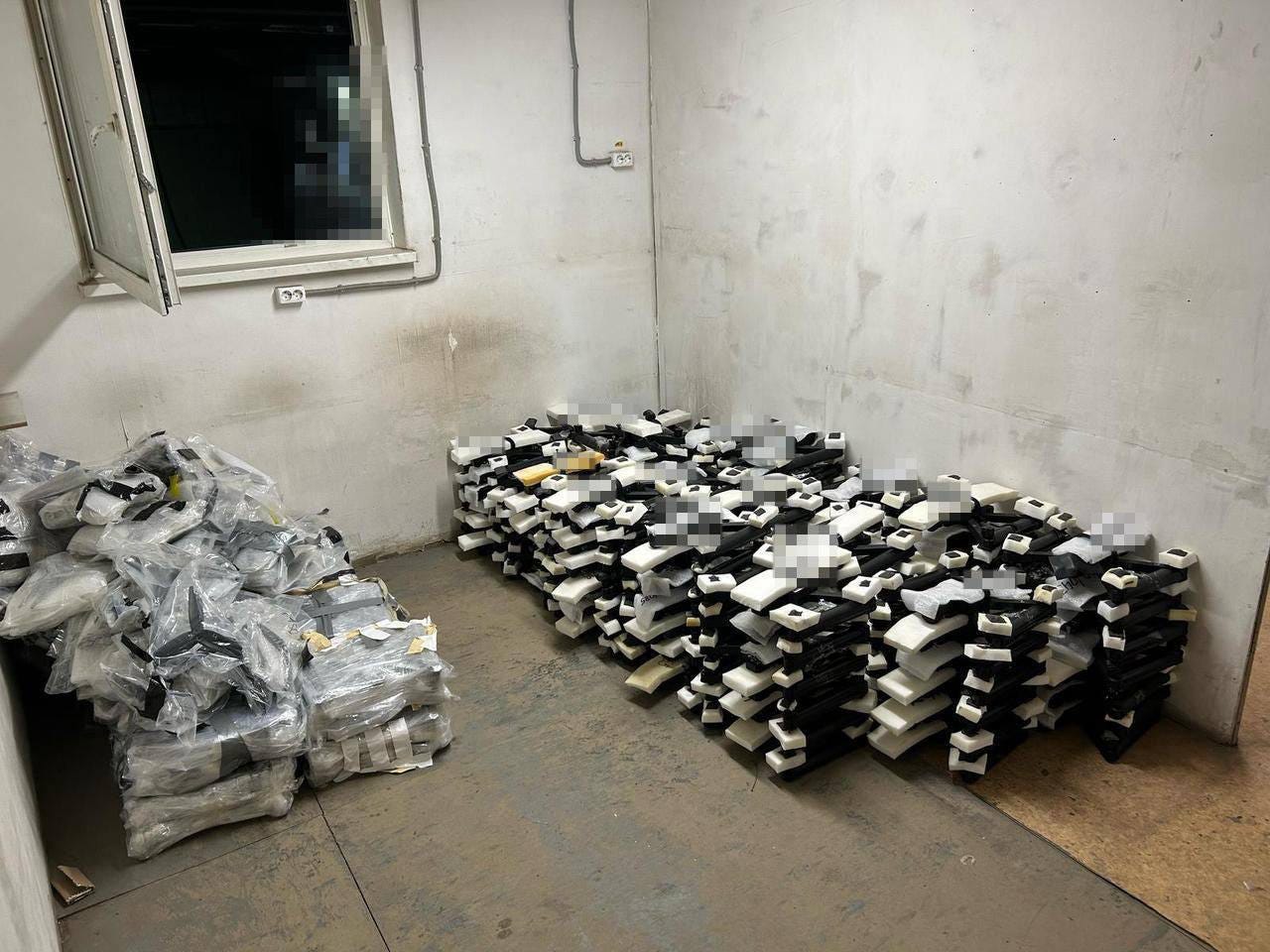Reaction shot: Ukraine's Itsy bitsy Spiders
Ukraine carries out a daring operation dubbed "Spider's Web"
What happened: On June 1, 2025, Ukraine executed its most ambitious and geographically expansive drone operation of the war, targeting multiple Russian strategic airbases with devastating precision. Operation “Spider's Web”, as it was code-named, represents a watershed moment in the Russo-Ukrainian conflict, demonstrating Ukraine's evolving capacity to project power deep into Russian territory while simultaneously exposing critical vulnerabilities in Russia's strategic defense infrastructure.
The operation, which took eighteen months to plan per President Zelenskyy, involved the destruction of multiple Russian aircraft. Ukraine claimed 40 bombers and one early-warning and control aircraft according to Ukraine, which would represent 34% of the Russian strategic bombers, were destroyed, representing a loss of roughly 7 billion dollars.
Operation Spider's Web stands as the largest Ukrainian drone attack on Russian airbases since the war began, employing 117 drones across at least four different airbases spanning thousands of kilometers and multiple time zones. The Ukrainian Security Service (SBU) used trucks deployed near the bases, where drones had been stored, to reach its targets.
The operation's unprecedented geographic reach extended from the Arctic Circle to Eastern Siberia, with the most distant target being the Belaya airbase in Irkutsk Oblast, located approximately 4,300 kilometers from the Ukrainian border. One of the attack, possibly against the Ukrainka airbase in the Amur Oblast, may have failed. Additional targets included the Olenya airbase near Murmansk, Dyagilevo airbase in the Ryazan Oblast, Ivanovo airbase in the Ivanovo Oblast.
The drones were hidden in wooden compartments inside containers.
WHY IT MATTERS: Ukraine’s “Spider’s web” operation is perhaps one of the most daring operations carried out by Kyiv, and comes at quite a sensitive time - that may have influenced the decision-making behind it.
The impact on Russia’s strategic aviation
The destruction of 41 Russian aircraft, including Tu-95 and Tu-22M3 strategic bombers and A-50 early warning aircraft, would represent a significant blow to Russia's long-range strike capabilities. At this time, footage and satellite images confirm only a fraction of the losses claimed by Ukraine. It is absolutely possible that Kyiv is exaggerating the impact of the attack, yet I do expect, given the use of FPV drones and how widely and quickly footage came out, that Kyiv has a good idea of the extent of Russia’s losses.
The target aircraft form the backbone of Russia's strategic aviation fleet, with the Tu-95MS serving as a primary platform for launching Kh-55 and Kh-101 cruise missiles capable of ranges. Each aircraft taken out is a substantive weight lifted from Ukraine’s air defenses, at a time when it may be struggling to repel missile attacks, making their destruction a substantial degradation of Russia's ability to conduct precision strikes against Ukrainian infrastructure and population centers.
The strategic significance of these losses extends beyond immediate tactical considerations. Russia has not manufactured new Tu-95 aircraft since the early 1990s, and the existing fleet has been maintained through refurbishment programs that have become increasingly challenging due to Western sanctions on avionics and engine components.
Intelligence
Perhaps even more than the results, the operation itself is impressive. Ukraine appears to have been able to operate on Russian soil for a year and a half, possibly mounting the drones and assembling the trucks/wooden compartments on Russian soil. This raises significant questions for Russia that go beyond the attack itself. I expect the FSB will be running like a chicken without a head for some time (while some heads may more literally roll).
Ukraine likely used its knowledge of Russia to operate, while the sheer corruption and the presence of criminal and smuggling networks (some used to bring in sanctioned goods) can easily be used against Moscow.
One of the drone rising above a container.
Ironically, this “societal fragility” is what Moscow was counting on when first invading Ukraine: The Kremlin thought its (perceived) deep penetration and knowledge of Ukrainian society, KGB cloak and dagger techniques and general corruption would mean the Ukrainian government would crumble in days. It did not.
Instead, Ukraine has shown that the very assets the Kremlin sought to use against Ukraine could in fact easily be turned against Russia. The SBU has shown itself capable of mounting impressive operations that require patience, intelligence, and some thinking “out of the box” (or inside the truck in this case). To Ukraine-watchers this won’t come as a surprise. The Ukrainian intelligence community has proven itself to be a terrifying foe for Russia’s highly-politicized/”loyalty-before-competence” FSB.
Material used in the attack, seen in a storage room used by the Ukrainian SBU.
The humiliation is compounded by the fact that the SBU appears to have quickly released pictures and details of the attack. Ukrainian media quoted officials suggesting that all personnel involved in the operation was removed by the time the attack was completed.
This removes the FSB usual PR stunt, of showcasing arrests, and highlighting its ability to swiftly track down the culprits (whether they truly are involved or not). The fact that Russia’s state media has kept largely mum shows the Russian government is likely still thinking about how to react domestically - and may even sweep that one down the proverbial carpet. The humiliating nature of the attack - which was deliberate given the SBU’s quick turn-around when it comes to attribution and the modus operandi of the attack - is likely to compound the whole “chicken-without-a-head” effect I mentioned before.
This is not to say that there will be no response. Though Moscow may feel it doesn’t have to comment on the attack domestically, it is also likely well aware that the humiliation was public and is commented across the world. The options for response are limited, unless Moscow really wants to escalate - at the risk of having the dead cat placed at its door. Given some commentary on the risks of attacking Russia’s strategic deterrence force, including by some figures formerly close to Trump (Mike Flynn for instance) I do expect the Kremlin to go for its favorite card, namely nuclear saber rattling. Moscow may still mounting a significant attack against Ukraine, using some of the tools it already used, such as the Oreshnik missile.
Timing of the attack
Given the timing of the attack, just as negotiations were about to resume in Istanbul and with no signs that Russia is moving away from its maximalist demands, I would not be surprised if we learn that the attack pre-empted a large-scale aerial offensive. In fact President Zelenskyy himself claimed the attack “ intelligence indicating that Russia was preparing another massive strike”. Preparations for an attack would also make sense operationally, by maximizing the damage done to aircraft, particularly if missiles are already mounted, or aircraft fueled. Just before the attack, Moscow had stepped up its drone attacks, using the Iranian-made Shahed, and may have waited for the talks to “collapse” (largely due to the conditions it is setting, which effectively require Ukraine to surrender and wait for the next blow) to carry out a major offensive.
The risk of course, is that the Kremlin will now use the attacks to pull out of the talks, and convince President Trump that Zelenskyy is the one to blame. There is not much convincing to be done, given the President’s track record. The Ukraine-Russia talks have been what I’ve called “dead cat” diplomacy - i.e. more about who ends up with the cat’s body at its front-door, than about resolving the crisis. Russia has set up its position in a way that make negotiations near impossible: Moscow has refused to agree to a full ceasefire (which it may have come to regret at this point), while conditioning any ceasefire with resolving the “deeper” issues behind the crisis. The Russian demands to resolve these “deeper issues” are akin to defanging Ukraine, providing no security guarantees to deter a future Russian push, and transferring regions Moscow was unable to capture by force through diplomacy.
The broader picture
The attack is also notable because of how easily it could be replicated, and the potential threat it poses to other countries - the US included. The use of containers as “carriers” (or container ships) isn’t a completely new, and may be used in the context of a US-China war, or a Chinese invasion of Taiwan, to name a few. All the militaries across the world will likely draw the lessons from the attack, including the need to reinforce security at airbase, either through concrete shelters, the deploying of anti-drone nets or the need for a very solid perimeter defense. The use of civilian trucks to carry out the attack shows we’re entering a new era where new tools provide new opportunities that will be seized, regardless of the debates surrounding them.





